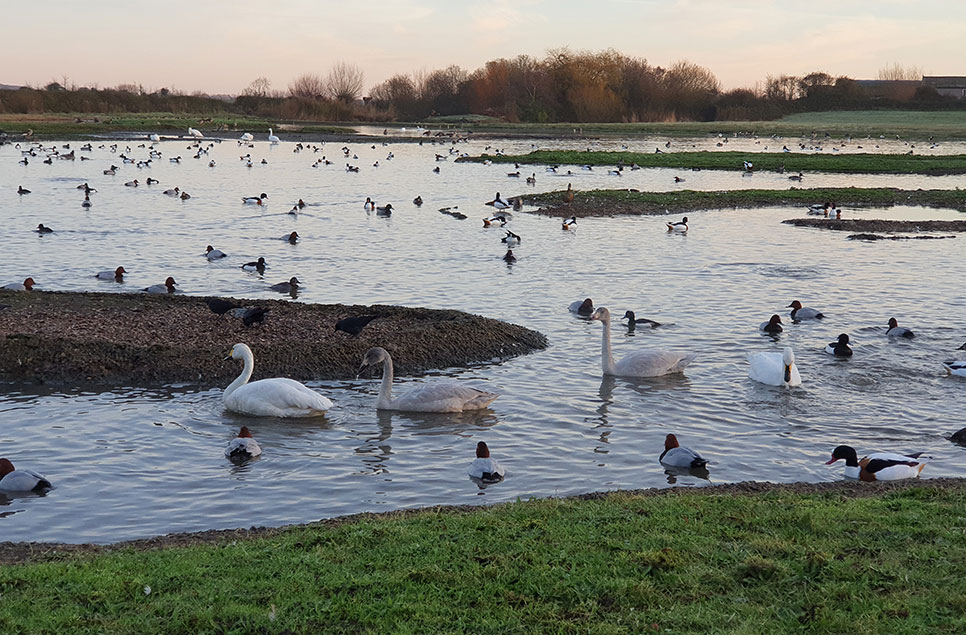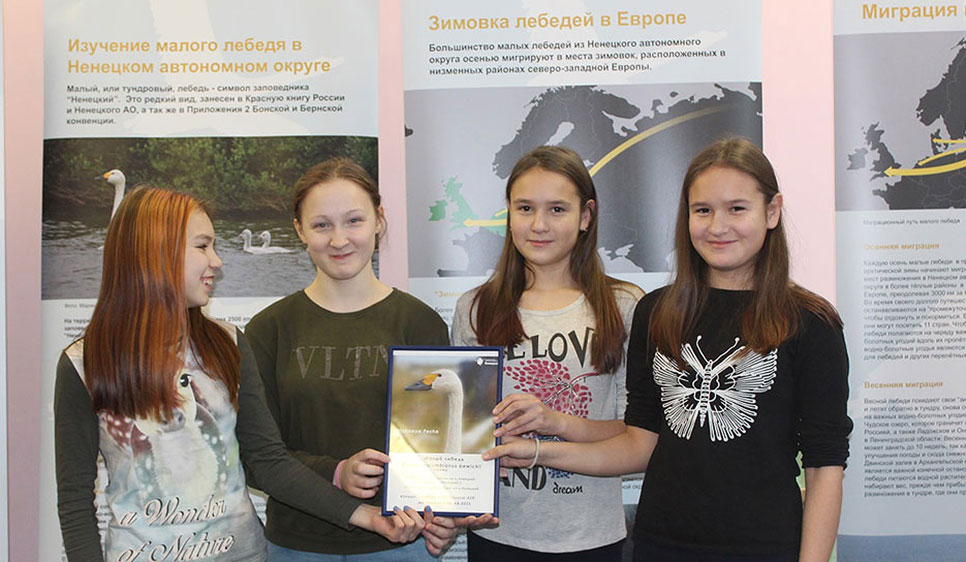Bewick's have a good breeding year!
The Bewick’s swans have had a much needed good breeding year according to the results of a recent survey. A huge international effort involving the counting and ageing of over 12,000 swans across Europe revealed 14% young in the flocks surveyed, the highest seen since 2001 (14.5% young). Age assessments of 1,238 swans’ at UK wintering sites, such as the Ouse Washes and Slimbridge, have found 17.6% among the flocks. This is an improvement on the average of about 10% recorded over the last ten years. There may be a number of factors influencing breeding success but it is likely that weather on arctic breeding grounds in the spring has a big part to play. In particular a cold snap in the spring when the swans are arriving in Russia may delay the breeding process and result in a much shorter time-frame for the birds to hatch and raise their young to full fitness for the long migration back. Weather conditions on the breeding grounds in spring 2012 were reported to be reasonable.
This is all especially good news given that numbers in the Northwest European Bewick’s swan population have declined steeply since the mid-1990s, from 29,000 to less than 20,000 birds. The higher number of cygnets this year will hopefully boost their numbers. Reasons for the decline are not yet clear but may include a combination of factors, including weather and habitat changes, affecting the swans’ survival and productivity. WWT is working with colleagues across the swans’ range to understand the causes of the decline.
Many thanks to Wim Tijsen and Jan Beekman for co-ordinating the international age census and to all observers across the flyway. Special thanks to the RSPB for conducting age counts on the Ouse Washes.



